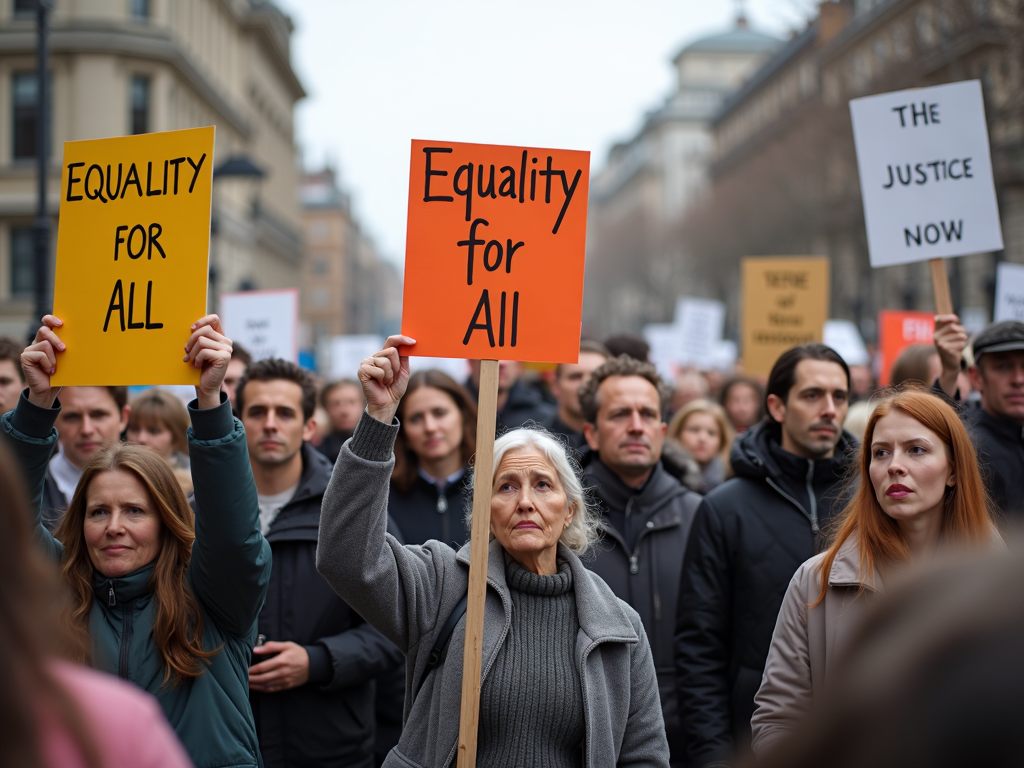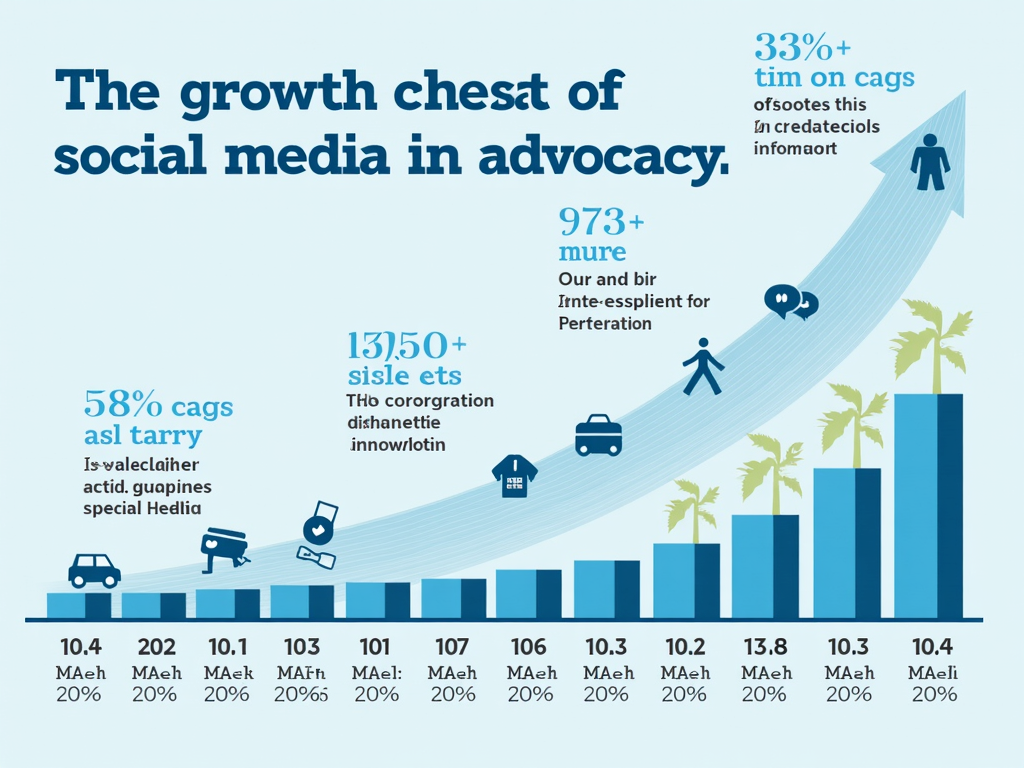The Power of Social Media in Advocacy
By , July 9, 2025
Social media has revolutionized the way we advocate for causes, making it easier than ever to spread awareness, mobilize supporters, and effect change. This article explores the power of social media in advocacy, providing strategies and insights for effective community engagement.

Social media has become an indispensable tool for advocacy, allowing individuals and organizations to reach a global audience with their message. Platforms like Facebook, Twitter, and Instagram provide a space for real-time communication, enabling advocates to share information, mobilize supporters, and effect change.
One of the key strengths of social media is its ability to amplify voices that might otherwise go unheard. Hashtag campaigns, such as #MeToo and #BlackLivesMatter, have demonstrated the power of social media to spark important conversations and bring attention to critical issues. For instance, the #MeToo movement, which began as a hashtag on Twitter, quickly spread across social media platforms, encouraging millions of people to share their stories of sexual harassment and assault. This movement not only raised awareness but also led to tangible changes in policies and societal attitudes. According to a study by the Pew Research Center, social media has become a key tool for political engagement, with 68% of adults in the United States using social media to engage with political content.

But how can you harness this power for your own cause? Here are some strategies for using social media to boost your advocacy efforts:
-
Create engaging content: Your posts should be compelling and resonate with your audience. Use storytelling to connect with readers on an emotional level, and make sure your content is shareable. For example, share personal stories of individuals affected by your cause or highlight the impact of your organization's work. As the Nonprofit Technology Network recommends, storytelling can humanize your cause and make it more relatable to your audience.
-
Use visuals: Images and videos are more likely to grab attention and be shared than text alone. Use high-quality visuals that tell a story and align with your message. Visual content is particularly effective on platforms like Instagram and Pinterest, where images are the primary mode of communication.
-
Leverage influencers: Collaborate with influencers who align with your cause to reach a wider audience. Their endorsement can lend credibility to your message and help you gain new supporters. Influencers can be celebrities, industry experts, or even micro-influencers with a dedicated following in your niche.
-
Engage with followers: Social media is a two-way street. Respond to comments, answer questions, and show appreciation for your supporters. This will help build a sense of community and keep your followers engaged. Regular interaction can also provide valuable feedback and insights into what your audience cares about.
-
Be consistent and authentic: Maintain a consistent message and be genuine in your interactions. Authenticity is key to building trust and credibility with your audience. Avoid using overly promotional language or making promises you can't keep. Instead, focus on transparency and honesty in your communications.
-
Use analytics to measure impact: Most social media platforms provide analytics tools that allow you to track the performance of your posts. Use these tools to see what's working and what's not, and adjust your strategy accordingly. For example, if you notice that posts with images receive more engagement, you might decide to incorporate more visual content into your strategy.
-
Create a content calendar: Planning your content in advance can help you stay organized and consistent. A content calendar can also help you align your posts with important dates or events related to your cause. Tools like Hootsuite or Buffer can assist in scheduling posts and managing multiple social media accounts.

Different social media platforms have different strengths and audiences. For example, Facebook is great for building communities and sharing longer-form content, while Twitter is ideal for real-time updates and engaging with influencers. Instagram is perfect for visual storytelling, and LinkedIn is useful for professional networking and B2B advocacy. Choose the platforms that best align with your goals and target audience. It's also important to tailor your content to each platform's unique features and user expectations. For instance, on Instagram, high-quality images and short videos perform well, while on LinkedIn, more professional and informative content is preferred.
One notable example of effective social media advocacy is the ALS Ice Bucket Challenge. This campaign,ਰ, which involved people dumping buckets of ice water on their heads to raise awareness for amyotrophic lateral sclerosis (ALS), went viral on social media in 2014. The challenge was shared widely on platforms like Facebook and Twitter, and it raised over $115 million for ALS research. The success of the Ice Bucket Challenge demonstrates the power of social media to mobilize supporters and generate significant impact. The campaign's simplicity, combined with the viral nature of social media, allowed it to spread rapidly and engage millions of people worldwide.

Storytelling is a powerful tool for advocacy, as it allows you to connect with your audience on an emotional level. Share personal stories of individuals affected by your cause, or highlight the impact of your organization's work. Use visuals, such as photos and videos, to bring these stories to life. For example, a short video testimonial from someone who has benefited from your organization's services can be more compelling than a dozen statistics. These stories can humanize your cause and make it more relatable to your audience.
Social media can also be a valuable tool for crisis communication. In times of crisis, such as natural disasters or public health emergencies, social media allows organizations to quickly disseminate information, provide updates, and coordinate relief efforts. For example, during the COVID-19 pandemic, many organizations used social media to share health guidelines, promote vaccination, and combat misinformation. The United Nations has highlighted how social media can be used to promote human rights and mobilize support during crises.

In addition to these strategies, it's important to understand the roles and responsibilities of advocacy volunteers. Volunteers play a crucial role in social media advocacy, from creating content to managing online communities. Some key responsibilities of advocacy volunteers include:
-
Content creation: Writing posts, creating graphics, and producing videos that align with the organization's message. Volunteers should be trained to ensure their content is consistent with the organization's brand and messaging.
-
Community management: Monitoring social media channels, responding to comments, and engaging with followers. This includes moderating discussions, addressing concerns, and fostering a positive online community.
-
Outreach: Identifying and connecting with potential supporters, partners, and influencers. Volunteers can help expand the organization's network by reaching out to like-minded individuals and organizations.
To be effective in these roles, volunteers need proper training and support. Organizations should provide resources and guidance to help volunteers succeed in their advocacy efforts. This might include training sessions on social media best practices, access to content creation tools, and regular check-ins to provide feedback and support.

Of course, social media advocacy also comes with challenges. Negative comments, misinformation, and online harassment are all potential obstacles. It's important to have a plan in place for handling these situations, such as moderating comments, fact-checking information, and providing support for volunteers who may face harassment. Organizations should also be prepared to address crises that may arise from social media missteps, such as inadvertently sharing incorrect information or handling a public relations issue.
Despite these challenges, the power of social media in advocacy cannot be denied. By leveraging these platforms effectively, advocates can reach a global audience, mobilize supporters, and effect real change. Whether you're advocating for social justice, environmental protection, or public health, social media offers unparalleled opportunities to amplify your message and engage with your community.

In conclusion, social media has revolutionized the way we advocate for causes, making it easier than ever to spread awareness and mobilize support. By using the strategies outlined in this article, you can harness the power of social media to boost your cause and make a difference in your community. Remember to stay authentic, engage with your audience, and use the unique features of each platform to your advantage. With the right approach, social media can be a powerful tool for creating lasting change.